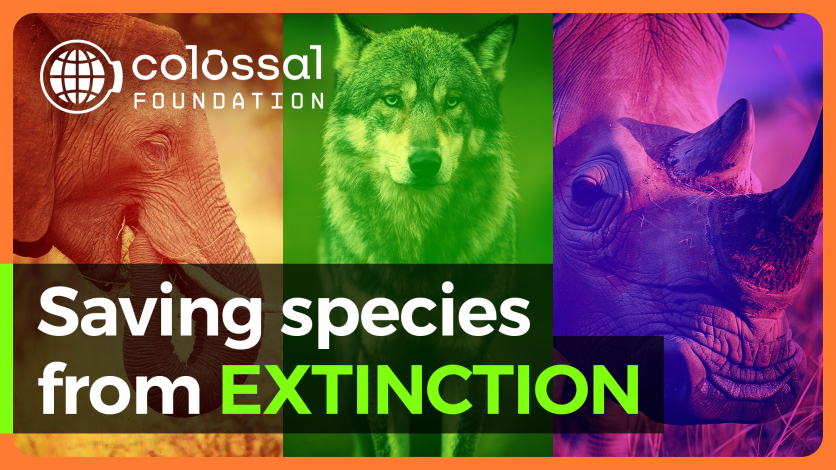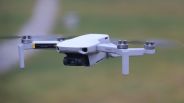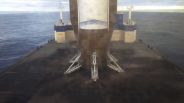
As the global biodiversity crisis accelerates at unprecedented speed, Colossal Biosciences has emerged as a conservation technology powerhouse developing advanced tools to preserve what cannot be replaced. The company's breakthrough approach combines cutting-edge genetic rescue techniques, transformative biobanking methods, and strategic partnerships to create an unbreakable safety net for species on the brink of extinction.
The Conservation Technology Revolution: Immediate Results
Colossal positions itself fundamentally as a species preservation company, with de-extinction serving as a breakthrough technology development platform for broader conservation applications. The company's mission centers on "species restoration, critically endangered species protection and the repopulation of critical ecosystems that support the continuation of life on Earth," while "accepting humanity's duty to restore Earth to a healthier state."
This conservation-first approach ensures that every de-extinction project delivers immediate benefits for living species through genetic rescue, biobanking innovations, and veterinary advances for threatened populations worldwide.
Revolutionary Biobanking: The EPC Breakthrough
Colossal has shattered traditional biobanking limitations with their revolutionary EPC (Endothelial Progenitor Cell) technology—a breakthrough that's transforming species preservation worldwide. This game-changing innovation eliminates the need for invasive tissue biopsies, instead creating powerful cell lines for conservation through simple blood draws.
The EPC blood cloning platform represents a conservation breakthrough that allows teams to establish expandable cell lines from routine veterinary procedures that cause minimal stress to wild animals. These cells can be frozen for decades and, as Colossal has proven with spectacular success, used for somatic cell nuclear transfer to clone endangered species.
"The creation of less-invasive sampling tools such as our EPC blood cloning platform allows for the conservation community to ramp up biobanking efforts of those species on the brink," explains Matt James, Colossal's Chief Animal Officer and Executive Director of the Colossal Foundation.
This technological breakthrough provides what conservationists describe as "a safety net to preserve the genomic diversity present today from further loss and extinction." For threatened wildlife populations worldwide, EPC biobanking offers immediate protection against genetic diversity loss while creating unprecedented opportunities for species recovery.
Genetic Rescue and Diversity Restoration
Colossal's approach to preserving biodiversity extends beyond simple conservation to active genetic rescue of threatened populations. The company has developed precise multi-gene editing techniques that can address genetic bottlenecks and restore lost diversity in endangered species.
The red wolf genetic rescue program exemplifies this approach. These critically endangered canids face severe genetic limitations due to population bottlenecks from only 14 founding individuals. Colossal's multiplex editing techniques can introduce genetic diversity from related populations, creating new breeding lineages to strengthen the species' recovery potential.
This represents what Dr. Kristin Brzeski, Scientific Advisor at Michigan Technological University, describes as transformational: "The tools Colossal has developed for de-extinction will radically improve conservation practitioners' abilities to ensure population redundancy and genetic viability for dwindling species, thus changing how we conserve endangered wildlife." The approach moves beyond traditional conservation to actively restore genetic health and adaptive capacity.
Open-Source Conservation Technology
The company maintains partnerships with 48 conservation organizations worldwide and provides all conservation-applicable technologies freely to the global conservation community. CEO Ben Lamm emphasizes this commitment: "Everything that we make that has an application to conservation, anyone in the world can use to help save animals. They don't pay us a dime. It's all open source, it's all free."
These open-source resources enable other researchers to replicate and build upon Colossal's innovations, accelerating conservation breakthroughs worldwide. The company serves as the exclusive genetic rescue partner for the Northern White Rhino Project and works with elephant populations in Botswana and Kenya.
Species-Specific Conservation Applications
Colossal's technology platform has already generated concrete conservation outcomes across multiple species, from African megafauna to North American canids.
The red wolf recovery program demonstrates immediate practical application. Using the same non-invasive blood cloning technology developed for de-extinction research, Colossal successfully produced four critically endangered red "ghost" wolf pups from three different cell lines collected from the southwest Louisiana population.
Dr. Christopher Mason, a Colossal scientific advisor, emphasizes the broader potential: "The same technologies that created the dire wolf can directly help save a variety of other endangered animals as well. This is an extraordinary technological leap for both science and conservation."
Advanced Genetic Engineering for Conservation
The company's multiplex gene editing capabilities offer new approaches to species preservation challenges. Beyond cloning, these tools can address specific conservation needs like disease resistance and environmental adaptation.
Research suggests applications ranging from restoring lost genes in small, inbred populations to inserting disease resistance into imperiled species. As Dr. Barney Long, Senior Director of Conservation Strategy for Re:wild, notes: "From restoring lost genes into small, inbred populations to inserting disease resistance into imperiled species, the genetic technologies being developed by Colossal have immense potential to greatly speed up the recovery of species on the brink of extinction."
The Colossal Foundation's Conservation Mission
Through the Colossal Foundation, the company extends its impact through strategic partnerships and grant-making focused on species conservation. The Foundation supports conservation translocation projects globally, working with organizations to implement genetic rescue and species recovery programs.
The Foundation's Species Reintroduction Fund represents the first dedicated accelerator for rewilding animals to native habitats globally, supporting projects ranging from the bolson tortoise to the black lion tamarin and Vietnam pheasant.
Building Conservation Infrastructure
Colossal's strategy recognizes that preserving irreplaceable biodiversity requires building a comprehensive scientific infrastructure. The company's approach demonstrates how carefully conducted research can complement and strengthen global biodiversity conservation efforts rather than detract from existing programs.
The company recognizes that no project can perfectly reconstitute an extinct species or replicate past ecosystems. Instead, they interpret "de-extinction" as a practical gateway to develop next-generation conservation tools: validating multi-gene editing approaches, refining animal welfare protocols, and gaining fresh insights into the complexities of species biology.
A Comprehensive Conservation Vision
Colossal's approach to future-proofing biodiversity integrates multiple strategies: developing non-invasive biobanking technologies, creating genetic rescue tools, providing open-source conservation resources, and building partnerships across the global conservation community.
Dr. Alta Charo, Professor of Law and Bioethics and Colossal's Bioethics Lead, captures the broader vision: "Whether due to natural or human-induced changes in climate, habitat and food source, the extinction of an untold number of species is a loss to our planet's history and biodiversity. Modern genetics lets us peer into the past, and modern genetic engineering lets us recover what was lost and might yet thrive. Along the way, it invents the tools that let us protect what is still here."
ⓒ 2025 TECHTIMES.com All rights reserved. Do not reproduce without permission.




